The Mormon Road was scouted by a party led by Jefferson Hunt which was searching for a supply route from Salt Lake City to Southern California during 1847-1848. Following the conclusion of the Mexican-American War the Mormon Road would be solidified as a major overland route.
The Mormon Road south from Utah passed through Las Vegas Valley into California towards Cajon Pass. The Mormon Road was later reorganized and improved into the Los Angeles-Salt Lake Trail by 1855. During the same year twenty-nine missionaries from Utah would establish an adobe fort at what is now the corner of Las Vegas Boulevard and Washington Avenue. The Los Angles-Salt Lake Trail which can be seen passing through New Mexico Territory on the 1857 Britton & Rey's Map of California.
The Mormons would abandon their fort in Las Vegas Valley during 1857 and return to Utah. The fort was reoccupied during 1865 by a party led by Octavius Gass. The Paiute had negotiated a treaty with the Federal government which ceded the land around the fortification in Las Vegas. Gass's stakes came to be known as "Rancho Las Vegas."
Nevada became a State during October of 1864 but did not include much of what was is now Clark County. Much of modern Clark County became part of Pah-Ute County of Arizona Territory in 1865. Much of Pah-Ute County of Arizona Territory was transferred to the State of Nevada in January of 1867. The Los Angeles-Salt Lake Trail can be observed passing through Las Vegas which was then part of Lincoln County on the 1873 Bancroft's Map of California, Nevada, Utah and Arizona. The Los-Angeles-Salt Lake Trail was also a component of the larger Old Spanish Trail which originated in Santa Fe, New Mexico.
In 1881 Gass lost Rancho Las Vegas which was subsequently purchased by Archibald Stewart. Stewart's wife Helen would become the first postmaster of Las Vegas during 1884. Archibald Stewart would be murdered during 1884 but the property would remain with his family following his death. In 1895 the first large scale Mormon migration to Las Vegas Valley took place. The 1,800-acre property owned by the Archibald family was sold to the San Pedro, Los Angeles & Salt Lake Railroad in 1902.
A primitive automotive road was constructed immediately south of sandstone formations which now comprise Valley of Fire State Park in 1912 towards Las Vegas Valley. This early automotive road was incorporated into the Arrowhead Trail when the Arrowhead Trails Association was founded during December of 1916. The 1917 Arrowhead Trail Map shows the namesake Auto Trail heading southwest from St. Thomas via what is now Valley of Fire State Park towards Las Vegas via Griffith Summit of the Muddy Mountains. The Arrowhead Trail south of Las Vegas climbed through Railroad Pass towards Bannock, California via Searchlight.
The 1919 Nevada Department of Highways Map shows the Arrowhead Trail heading southwest from St. Thomas towards Las Vegas through what is now Valley of Fire State Park as a primary highway. The Arrowhead Trail was designated as Nevada State Route 6 from the Arizona State Line southwest to Las Vegas by the Nevada Legislature in 1919. The Arrowhead Trail originally followed Nevada State Route 5 south from Las Vegas towards Searchlight and the California State Line.
By 1920 the "Silver Lake Cutoff" of the Arrowhead Trail was proposed as a means of to saving 90 miles by connecting the highway from Las Vegas directly southwest to Dagget, California. The Silver Lake Cutoff was similar to the previous Los Angeles-Salt Lake Road but followed a more northern path to utilize the Tonopah & Tidewater Railroad siding of Silver Lake as a waypoint. This new routing of the Arrowhead Trail via the Silver Lake Cutoff was ultimately paved with oiled earth in 1925 by San Bernardino County. Within California the Silver Lake Cutoff would become an extension of Legislative Route Number 31 during 1925.
The 1924 Rand McNally Map of California and Nevada displays the Arrowhead Trail in addition to Evergreen National Highway traveling through Valley of Fire to Las Vegas. The Arrowhead Trail and Evergreen National Highway can be seen climbing Griffith Summit southwest of Valley of Fire. The Arrowhead Trail and Evergreen National Highway are shown to branch in downtown Las Vegas at the intersection of 5th Street/Fremont Street. The Arrowhead Trail followed Las Vegas Boulevard (Nevada State Route 6) south to Jean and into California via Good Springs. The Evergreen National Highway is shown utilizing Fremont Street (Nevada State Route 5) towards Railroad Pass and Searchlight.
The US Route System wouldn't be created until November 11, 1926, when it the final system drafted by the American Association of State Highway Officials (AASHO) was approved by the Secretary of Agriculture. The initial description of US Route 91 displays it following the established path of Nevada State Route 6 and the Arrowhead Trail. US Route 91 passed through Las Vegas southbound via Main Street (now Las Vegas Boulevard north of downtown), 5th Street in downtown (now Las Vegas Boulevard) and Las Vegas Boulevard to the California state line past Jean. Unlike the early Silver Lake Cutoff, the routing of US Route 91 bypassed Good Springs of favor entering California near Primm.
A letter dated June 2, 1939, from the AASHO Executive Secretary to the State Highway engineers of; California, Nevada, Oregon and Idaho noted the proposed alignment of US Route 95 south to Blythe, California. A separate letter to the Nevada State Highway Engineer notes that a last-minute request was made to extend US Route 93 south of Las Vegas to the California State Line via Searchlight over Nevada State Route 5 instead of US Route 95.
On February 15, 1956, the Nevada State Highway Engineer in a letter to AASHO advising that six copies of an application to establish US Route 66 Alternate to Las Vegas had been submitted. The Nevada State Highway Engineer noted the State of California agreed to sign US Route 66 Alternate if approved and they were anticipated to submit their own like request to the AASHO Executive Committee.
During July 2022 the Las Vegas Review-Journal reported the Nevada Department of Transportation had selected a preferred routing for Interstate 11 through the Las Vegas Metropolitan Area. The preferred corridor follows existing US Route 95 from the Interstate 215 interchange through the Spaghetti Bowl Interchange (Interstate 15) towards recently completed freeway to Nevada State Route 157. The preferred routing of Interstate 11 would absorb the remaining mileage of Interstate 515 between Interstate 215 north to Interstate 15.
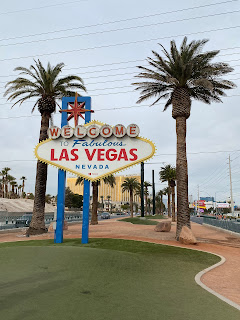

































































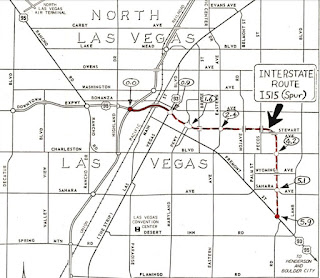














































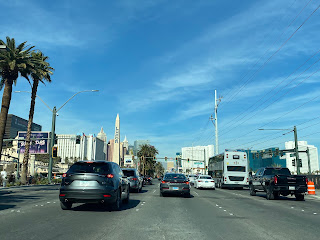

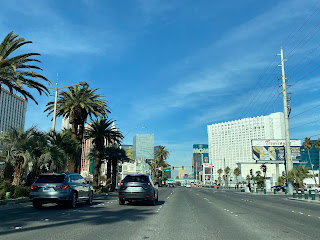






































































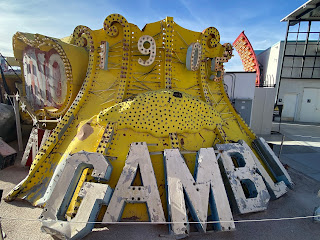



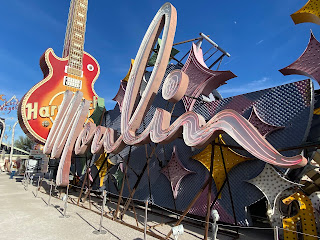





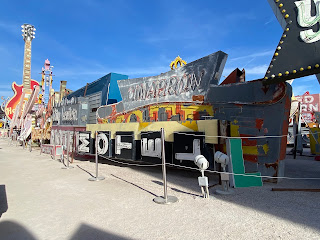








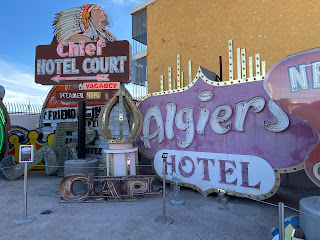



































































Comments